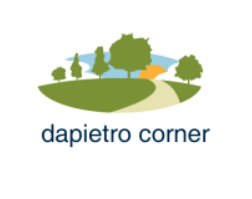Trust & Transparency: Navigating the Nuances of Monitoring Work-From-Home Employees
The pandemic ushered in a paradigm shift in the way we work. Offices emptied, laptops migrated to kitchen tables, and the “remote revolution” became a reality. As organizations adjusted to this new normal, a critical question emerged: how to effectively monitoring work from home employees and manage work-from-home employees without compromising trust and transparency?
The Allure and Anxiety of Remote Work
Working remotely offers undeniable benefits. Increased autonomy, flexible schedules, and reduced commutes contribute to improved employee morale and productivity. For companies, the advantages include lowered overhead costs, access to a wider talent pool, and increased employee retention. However, the lack of physical oversight also sparks anxiety. Managers worry about decreased output, communication breakdowns, and the blurring of lines between personal and professional lives.
Monitoring: A Double-Edged Sword
Enter the concept of employee monitoring. It encompasses various tools and techniques, from time-tracking software and keystroke logging to web activity monitoring and webcam surveillance. While proponents argue that monitoring boosts accountability and productivity, critics highlight the potential for privacy invasion, micromanagement, and a toxic culture of distrust.
Finding the Right Balance: A Framework for Success
Striking the right balance between effective management and employee trust is crucial in the remote work landscape. Here are some key principles to consider:
-
Focus on Outcomes, Not Activity: Shift the focus from monitoring every keystroke to measuring output and results. Clearly define key performance indicators (KPIs) for each role and empower employees to achieve them, regardless of their work location or hours.
-
Communication is Key: Open and transparent communication is essential. Clearly communicate the rationale behind any monitoring initiatives, emphasizing the aim of improving processes and supporting employees, not fostering mistrust.
-
Tech with a Human Touch: Don’t rely solely on technology. Invest in regular video calls, one-on-one meetings, and team-building activities to maintain human connection and address concerns directly.
-
Respect Privacy Boundaries: Set clear boundaries regarding monitoring tools and their usage. Avoid constant surveillance and respect employees’ right to privacy during breaks and non-work hours.
-
Trust, Empower, and Encourage: Cultivate a culture of trust and autonomy. Empower employees to manage their time effectively and hold them accountable for results. Encourage open communication and feedback to address any challenges proactively.
Examples of Effective Monitoring Practices
Several tools and practices can be implemented effectively in a remote work setting without compromising trust. These include:
- Project Management Tools: Platforms like Asana or Trello facilitate collaboration, task visibility, and progress tracking while fostering transparency within teams.
- Performance Tracking Software: Tools like Toggl or Harvest allow employees to track their time spent on different tasks, providing valuable data for assessing productivity and resource allocation.
- Regular Feedback Loops: Implementing systems for regular feedback, such as online surveys or pulse checks, can provide valuable insights into employee well-being, workload, and potential challenges.
Shifting the Paradigm: From Monitoring to Transparency
Ultimately, the goal should not be to simply monitor employees, but to create a culture of transparency and open communication. This shift requires building trust, focusing on outcomes, and empowering employees to take ownership of their work. By prioritizing these principles, organizations can navigate the nuances of remote work and create a thriving, productive environment for employees, regardless of their physical location.
Embracing the Remote Future
The remote work revolution is here to stay. By actively addressing the challenges and seizing the opportunities, organizations can thrive in this new landscape. By embracing trust, transparency, and effective communication, we can move beyond the anxieties of monitoring and unlock the true potential of a distributed workforce, building a future of work that is not only productive but also empowering and fulfilling for all.

